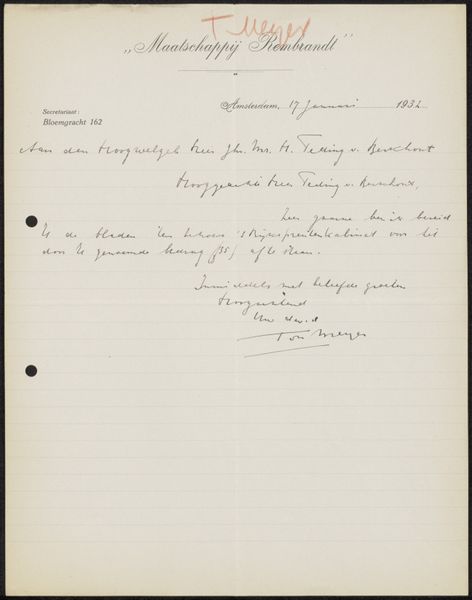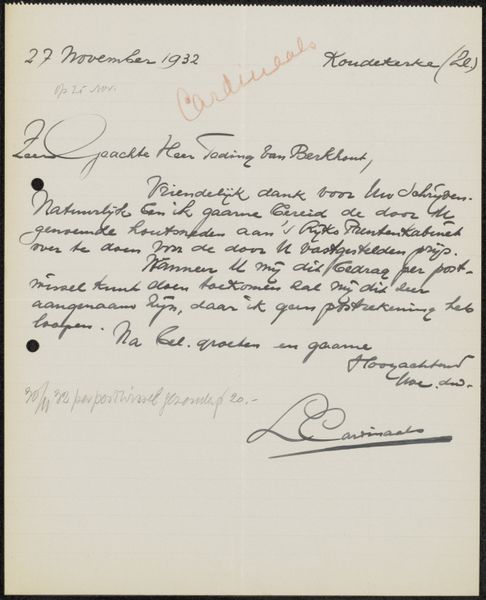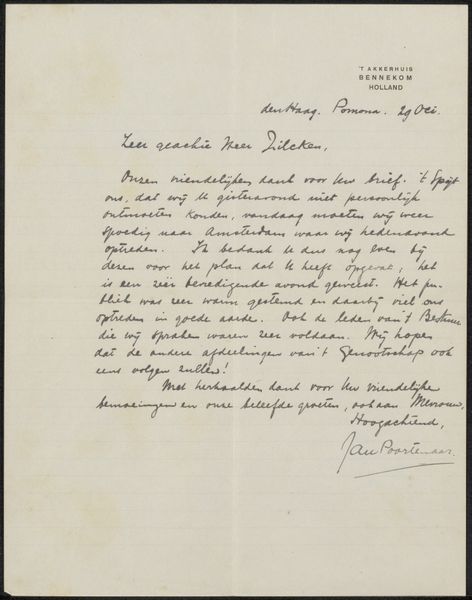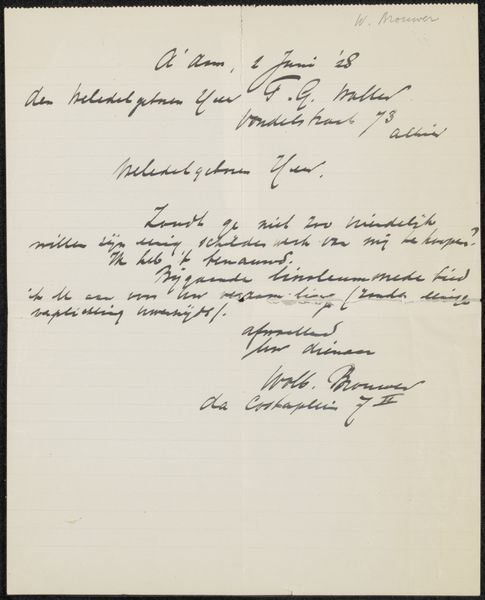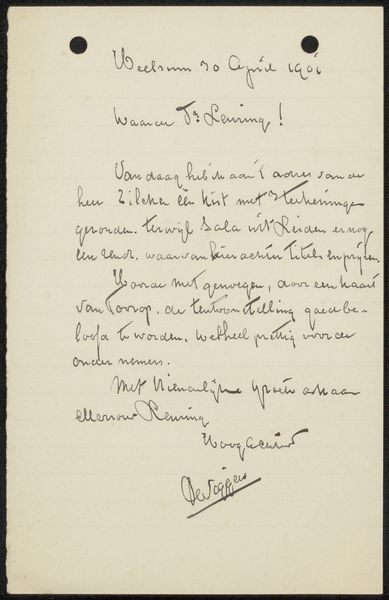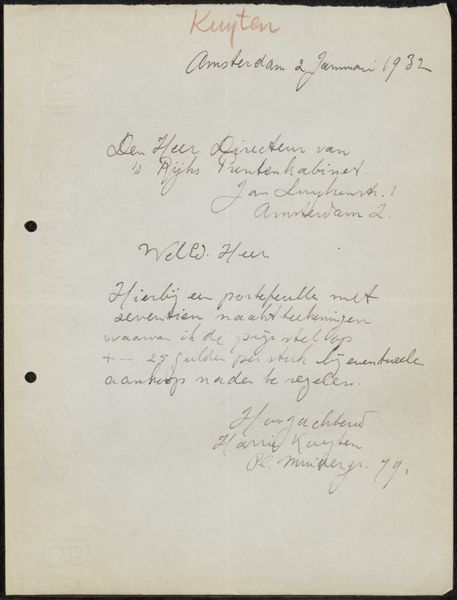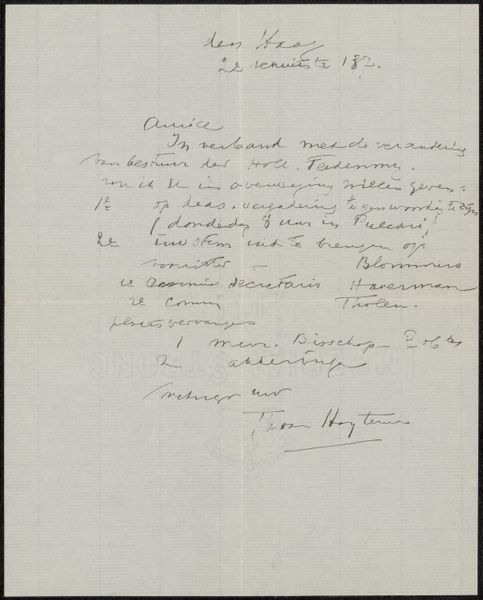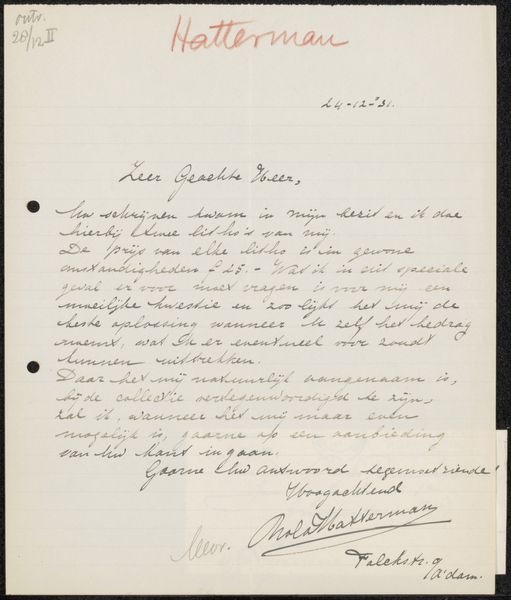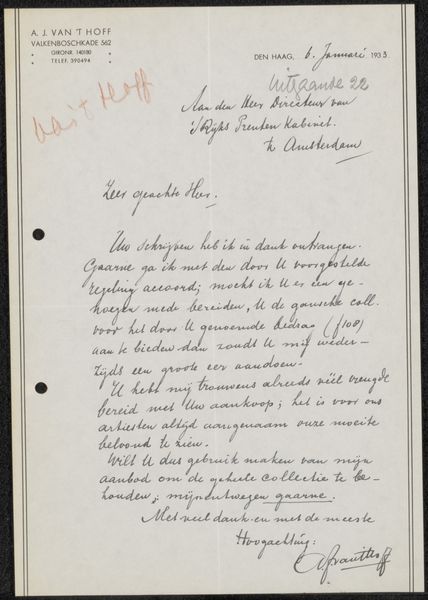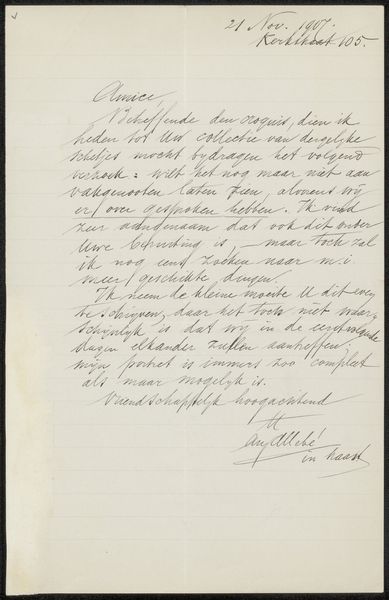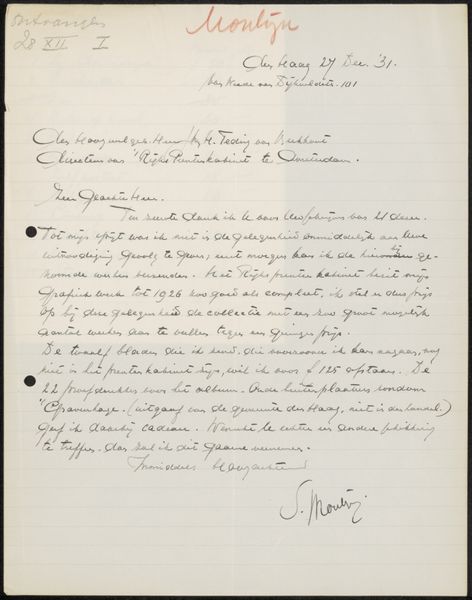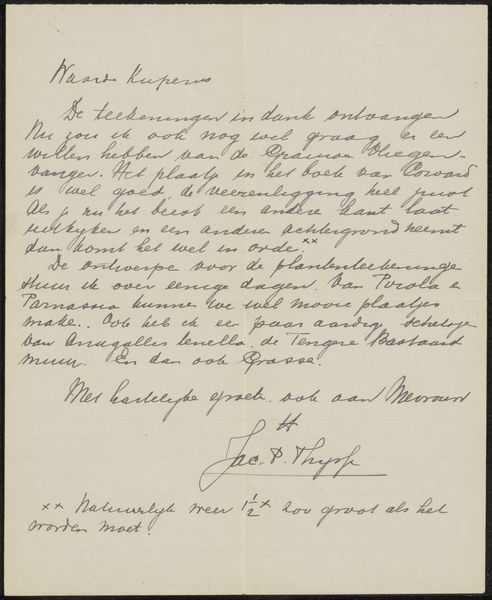
Brief aan jonkheer Hendrik Teding van Berkhout (1879-1969) Possibly 1932
0:00
0:00
simonmoulijn
Rijksmuseum
drawing, paper, ink, pen
#
drawing
#
ink paper printed
#
old engraving style
#
hand drawn type
#
paper
#
personal sketchbook
#
ink
#
hand-drawn typeface
#
ink drawing experimentation
#
pen-ink sketch
#
ink colored
#
sketchbook drawing
#
pen
#
sketchbook art
Copyright: Rijks Museum: Open Domain
Curator: This piece is titled "Brief aan jonkheer Hendrik Teding van Berkhout (1879-1969)," or "Letter to Jonkheer Hendrik Teding van Berkhout." It's attributed to Simon Moulijn, likely dating from 1932, and resides here at the Rijksmuseum. It’s a pen and ink drawing on paper. Editor: My immediate thought is of intimacy, almost intruding on someone's personal correspondence. The handwritten script and the informal nature of a letter evoke a sense of closeness and vulnerability. Curator: Absolutely. Epistolary exchanges offer rich insight into historical periods and power dynamics. Van Berkhout, the recipient, was of the Dutch nobility, immediately signifying privilege and a particular social stratum. Moulijn, a well-regarded artist, initiates this conversation, pointing to the role of patronage, influence, and the very different currencies they both bring to the table. Editor: I'm drawn to the graphic quality of the letter itself. The deliberate slant of the handwriting, the variation in line weight - these aren't simply functional. They become visual elements. It reads as though there are layered power structures present, while this personal communication is visually pleasing. It is both vulnerable, personal and aesthetically powerful at the same time. Curator: Precisely! And consider where a letter sits within a network. The institutions, social mores, and personal connections. It's not merely a document; it embodies communication within very tight circles of Dutch society at this moment in time. How could class barriers affect an artist like Simon Moulijn trying to navigate the art world in 1930s? Editor: Thinking about this letter being displayed now… It seems to comment on ideas of authorship, communication and accessibility in art history. A contemporary lens may give voice to previous power discrepancies that this simple note doesn't immediately illustrate. Curator: Yes, what we're observing here through this interaction goes far beyond ink on paper; these seemingly quiet artworks offer so many intersectional perspectives if we ask them the right questions! Editor: Exactly, now I see this humble looking letter as much more complex than its handwritten note suggests.
Comments
No comments
Be the first to comment and join the conversation on the ultimate creative platform.

